Writes i-cherski: During the tour in Singapore, our small but warm group of journalists for some reason invited to visit the factory for the production of fish balls. The meaning of the visit of this factory has reached me not at once — after all, not every factory for the production of food dare to show reporters what actually it's all done. But everything was presented very honestly and frankly, so small report with pictures.


1. Let's start with the happy children. The children on the poster desperately demonstrate how they love the factory production. And by the way do not lie in the numerous local cafes I observed counterparts of these children, eating different versions of balls with a big appetite.
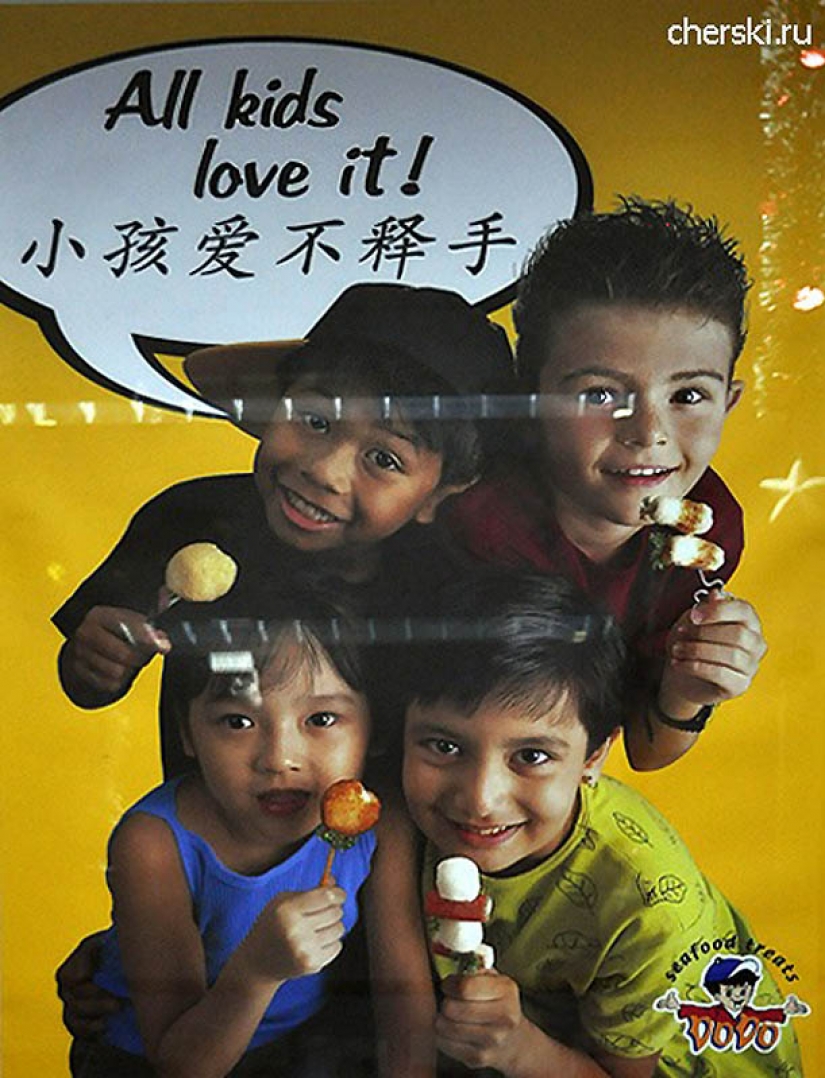
2. And versions really a lot, with all sorts of flavors, supplements, etc. Well, the packaging itself is quite nice.

3. The tour began with a tasting. It is unlikely I will want to try some of it again, but the taste is quite tolerable. Maybe we're just not used to this, and besides, we eat it without the sauces, spices, etc. But if you pour something correct, may not the delicacy.

4. To penetrate the mysteries of the process, we went down to the basement.
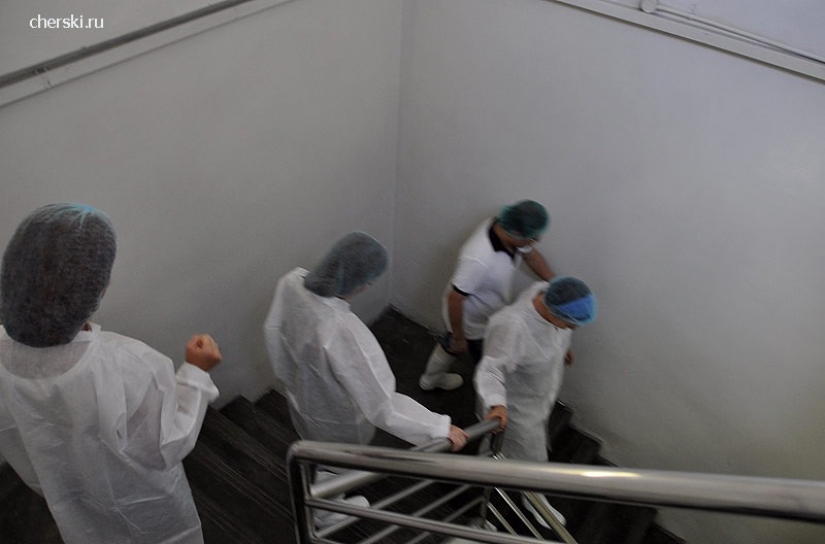
5. And into a room of forced sterilization. Next will be the only ones who washed his hands...
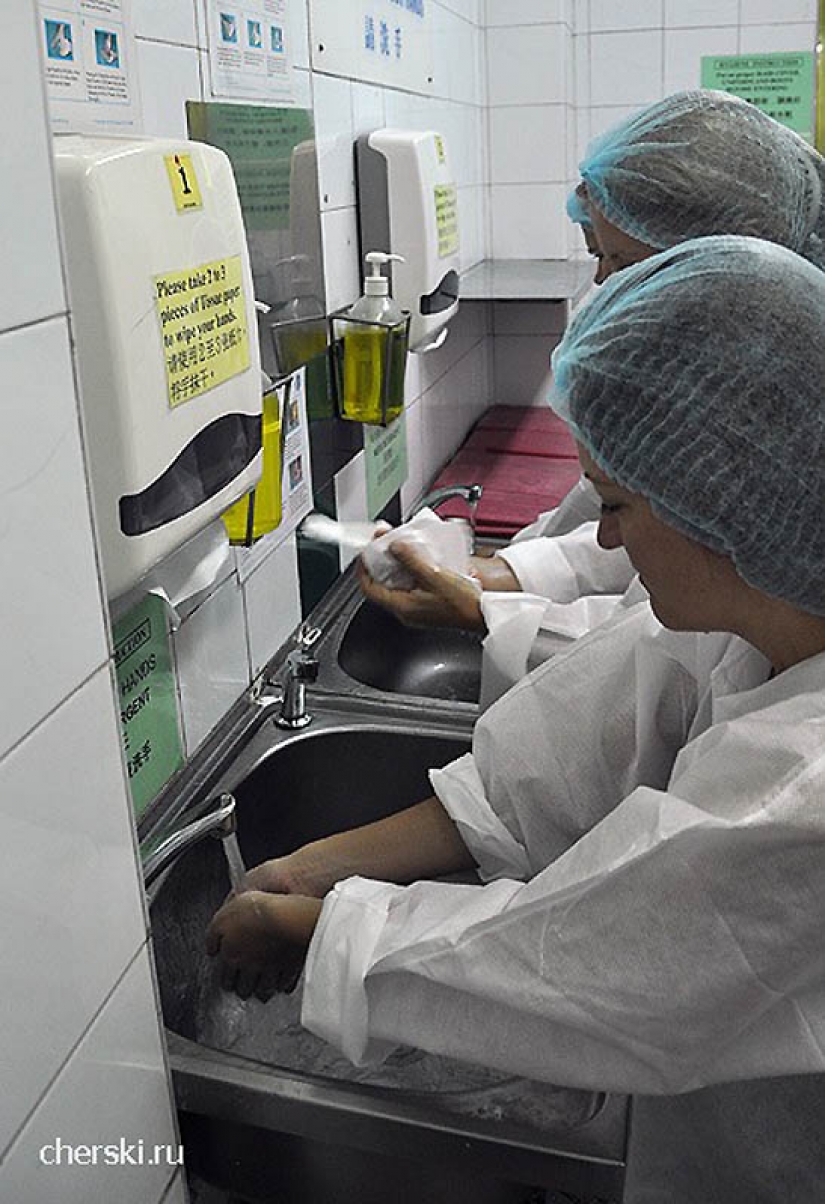
6. ... exactly as the user manual
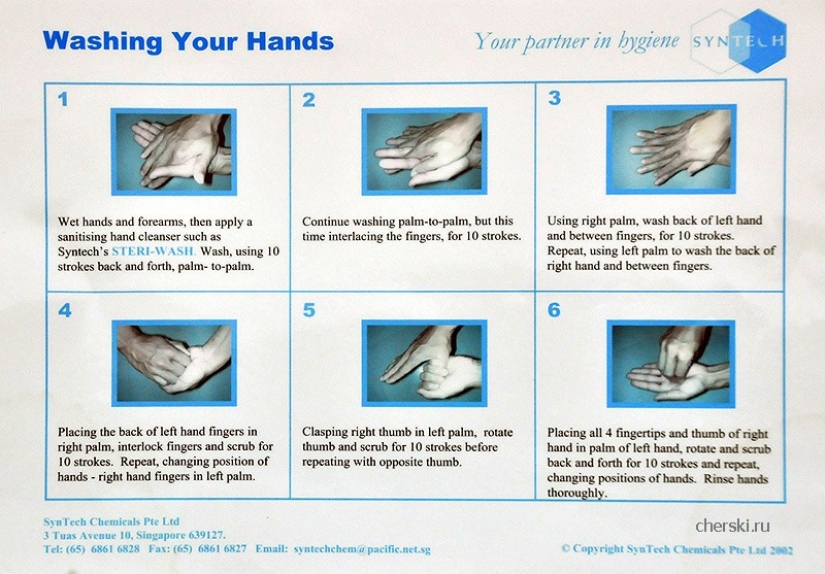
7. and then wiped those same hands too, according to the instructions.
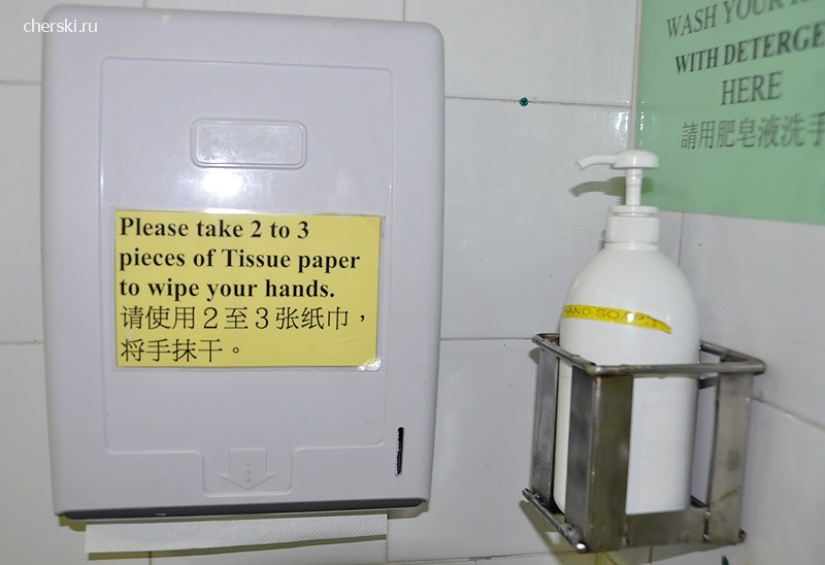
8. ... and at the same time washed in some kind of caustic solution and without sterile boots

9. In addition, the wall hanging special rollers for collection of clothes of dust\lint
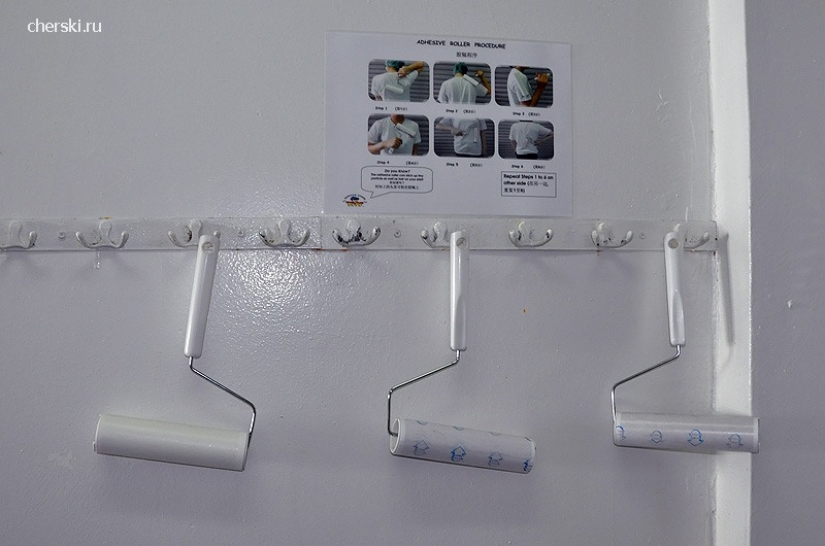
10. And also a user manual - where the same without her. However, we did not use rollers because we were given a new sterile gowns.
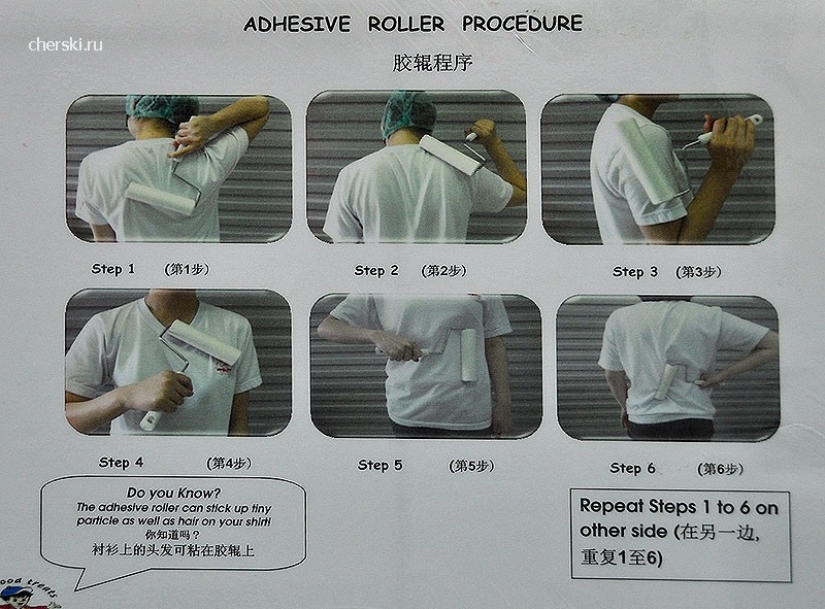
11. And here the Holy of holies - the warehouse of the source material. I naively expected to see a live fish. Yes, I'm funny. Of course, the pellets in colored packages was once a fish.
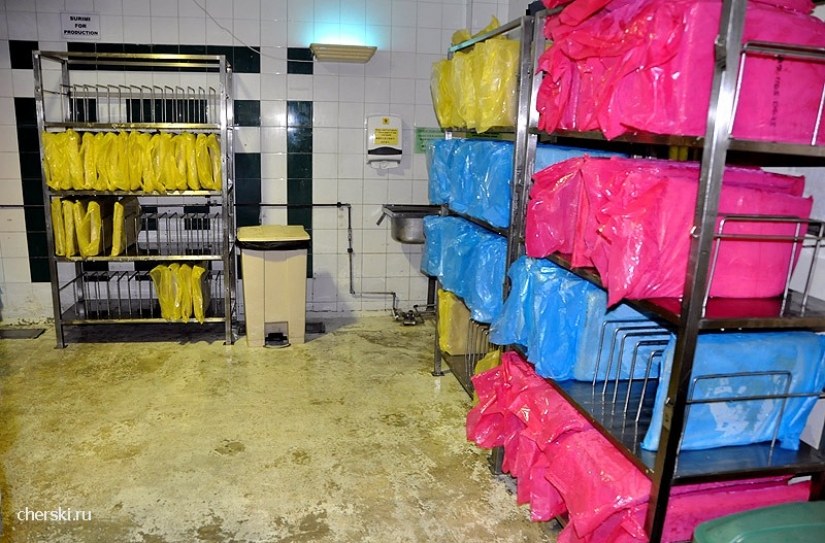
12. But after the meeting with the trawler this whole fish looks like this:
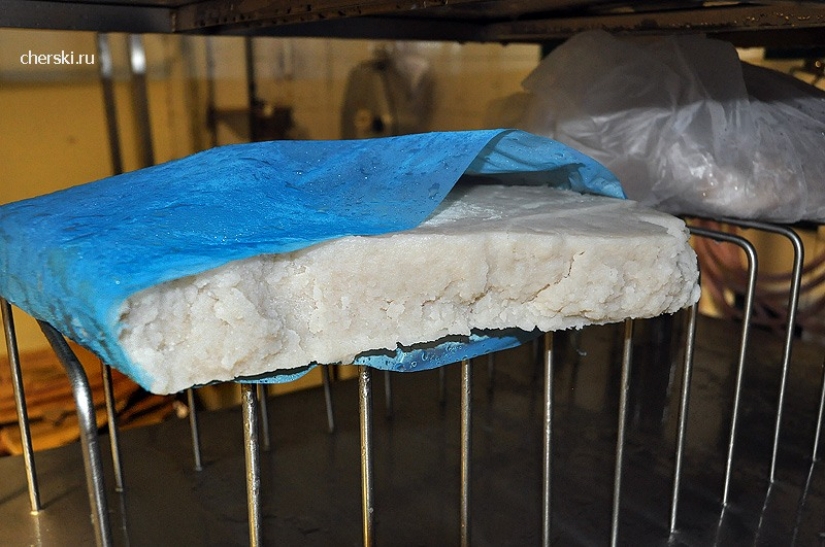
13. Of course, in this form, very few people will be there. There's even the original packaging is not save.
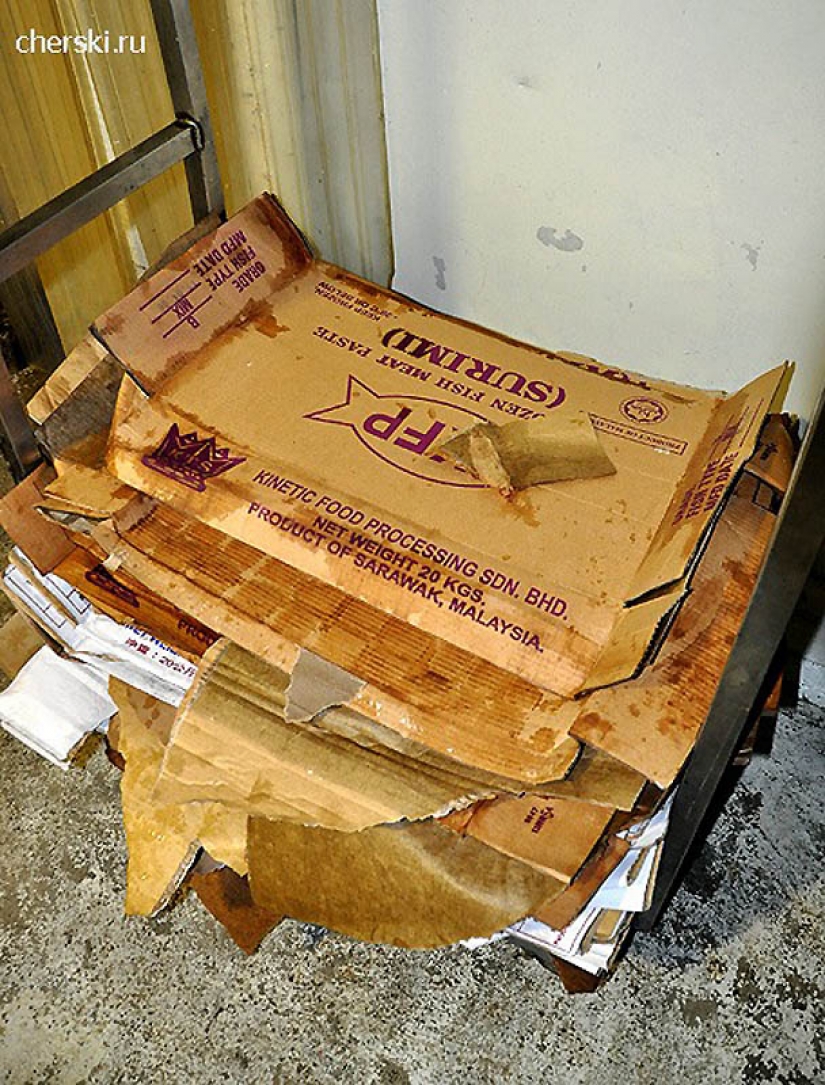
14. Therefore, the beef thawed, grind and putting even a number of procedures to get out of it DOZENS of DIFFERENT kinds in taste, shape and composition of products.
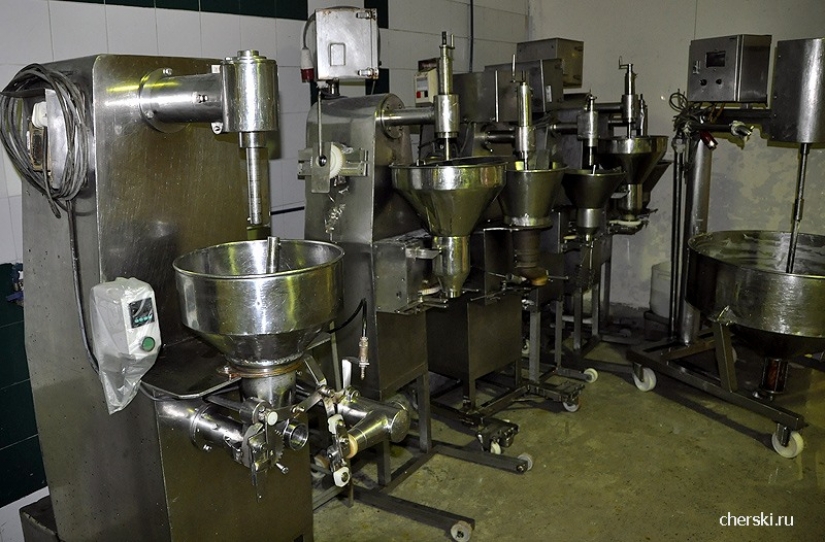
15.
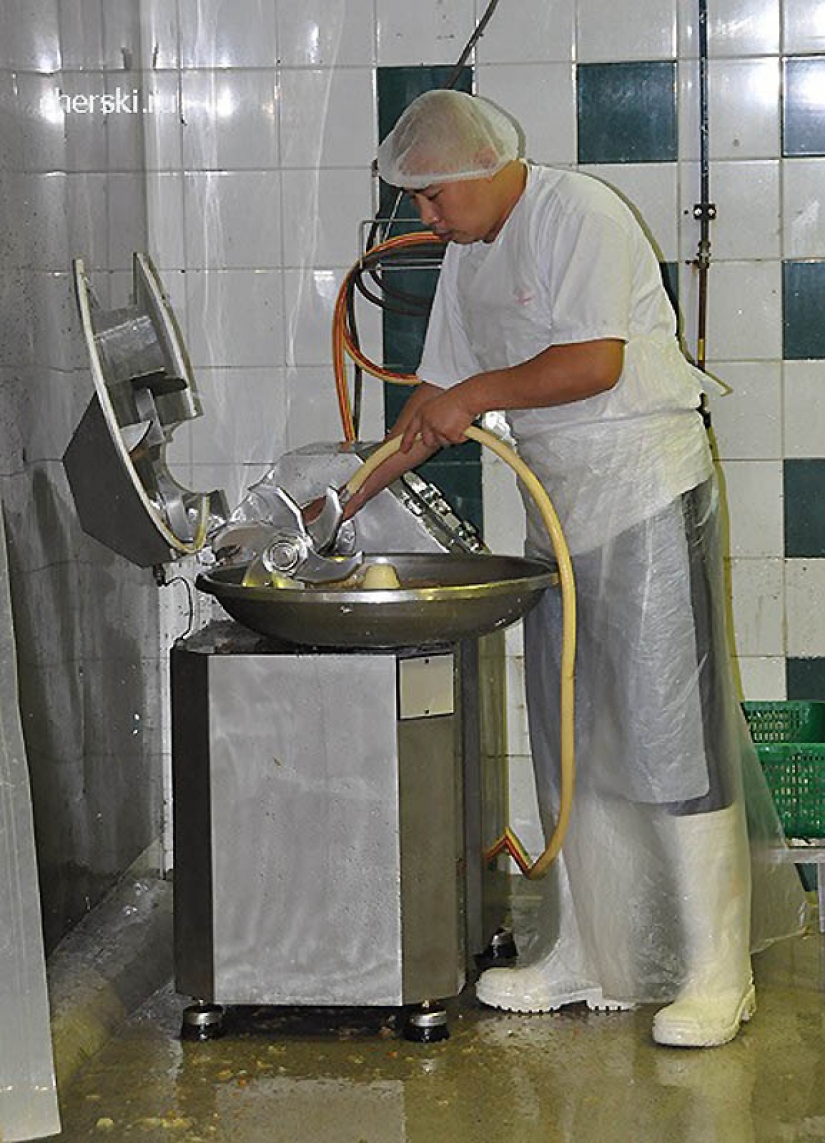
16. Here is the batch. While in the stuffing added some secret matter, giving the future balls the consistency of rubber balls of different densities.
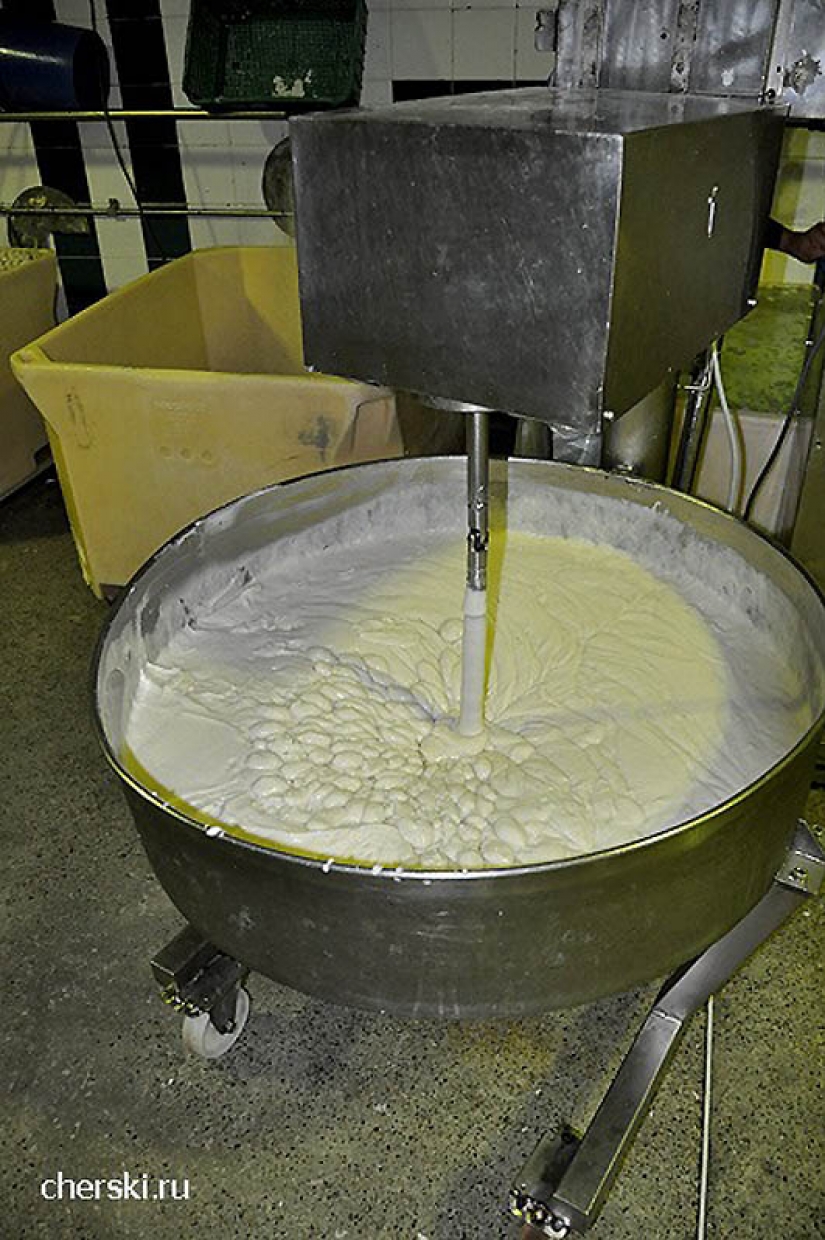
17. And here are the hordes of balls soak in different solutions
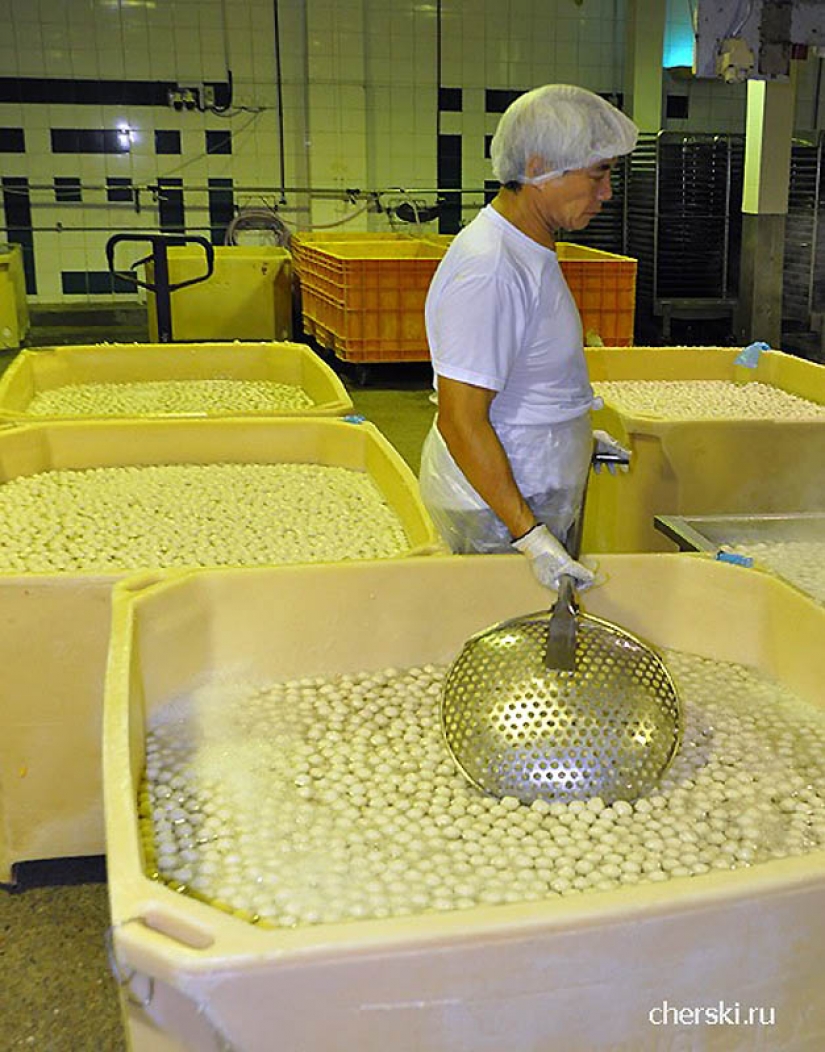
18. And then processed in different ways and temperatures
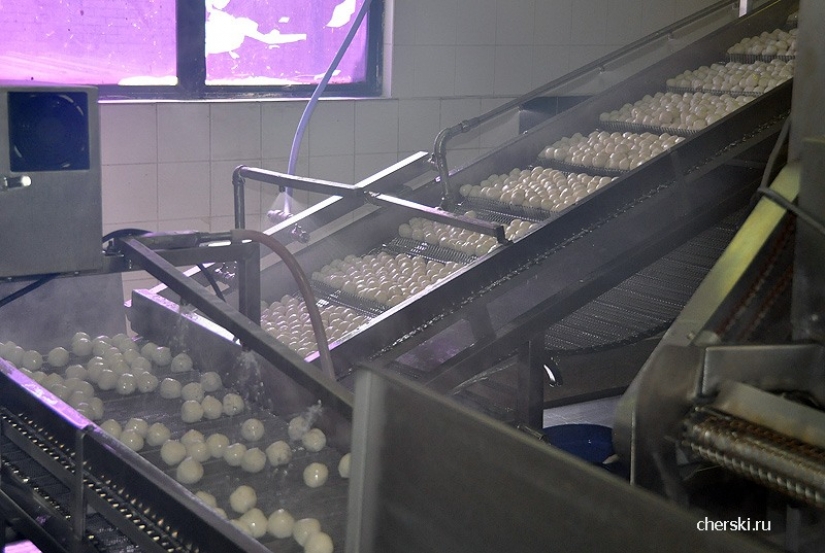
19. Some are due to be here so sausages or something
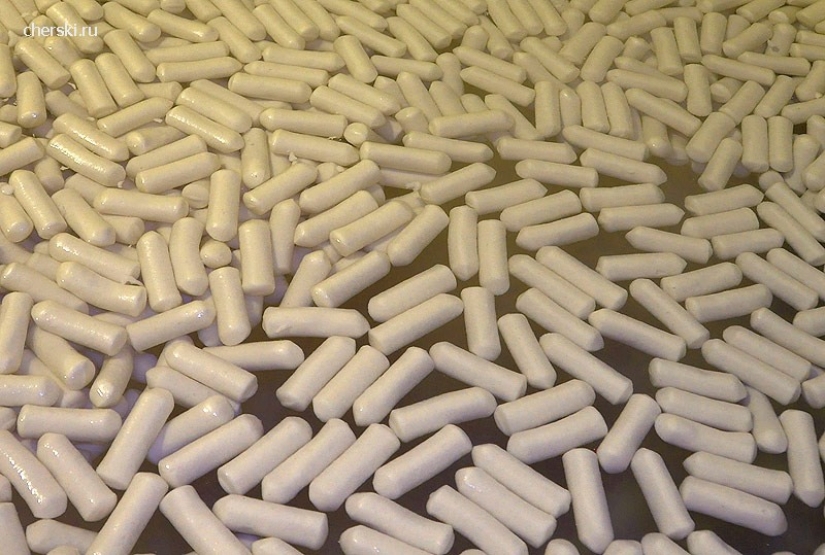
20. But here they have something that is dripping and frozen. Packed somehow manually - maybe automated line would cost more than manual labor.
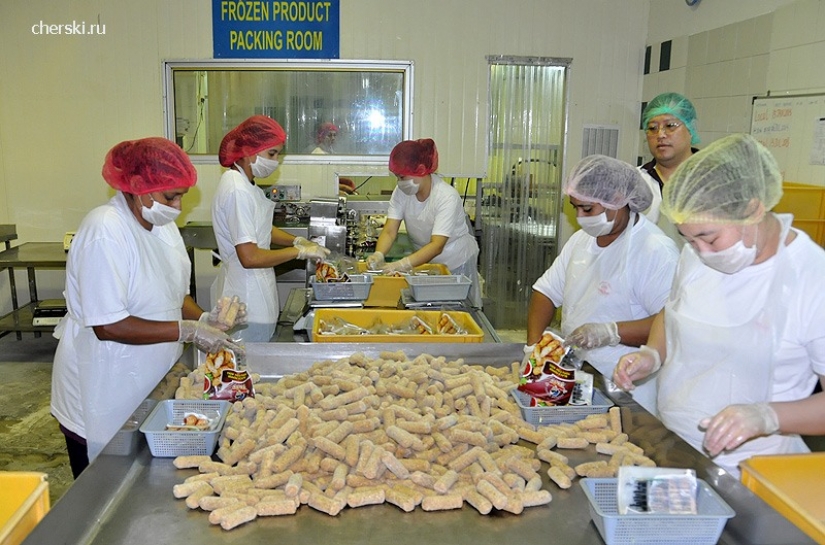
21.
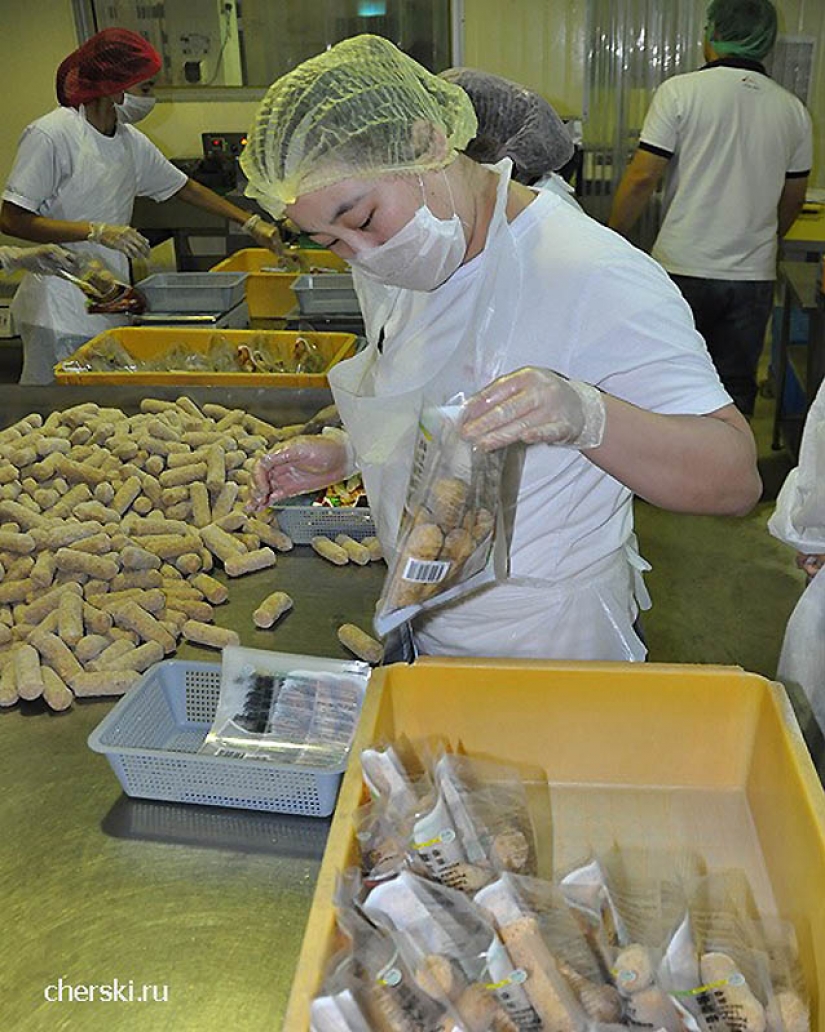
22. "Where are the crab legs?" -you ask? But they are made here. The feedstock is the same, additives are a little different. The mass is rolled into thin sheets, which are then rolled in puff pastry rolls.
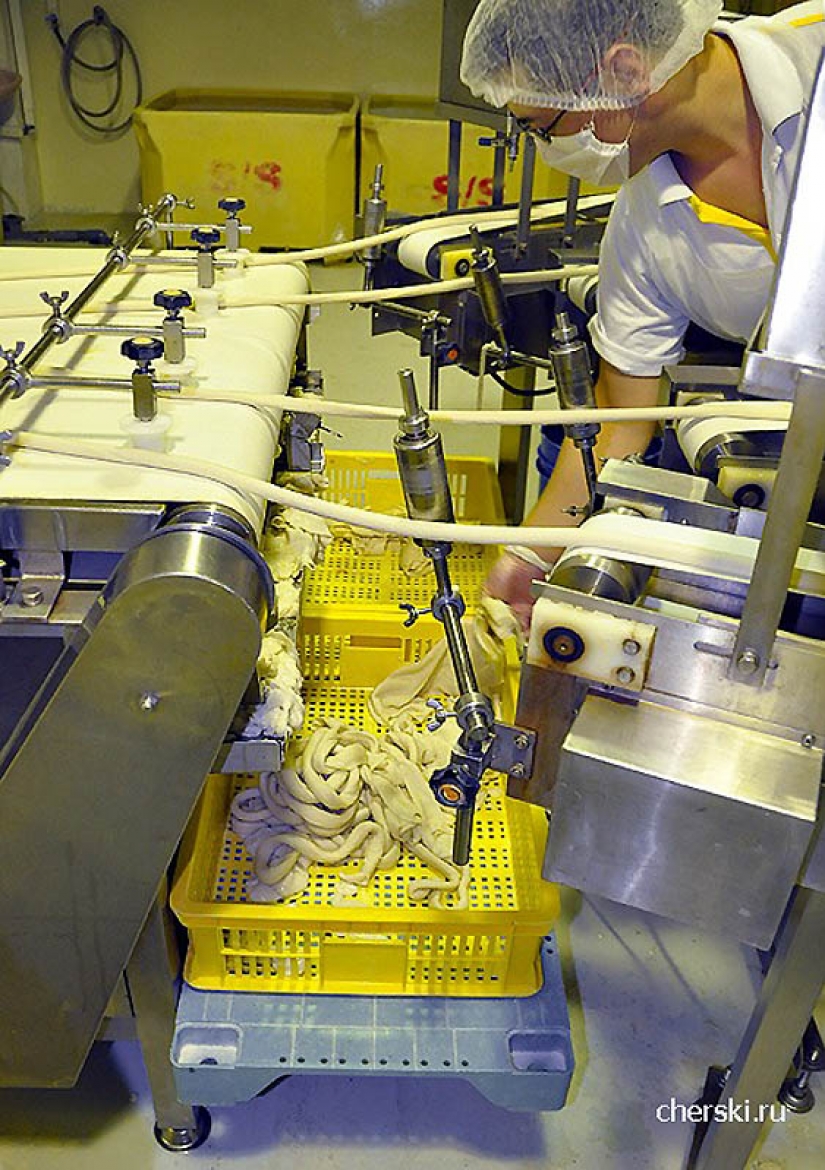
23. Here they are before painting and cutting.
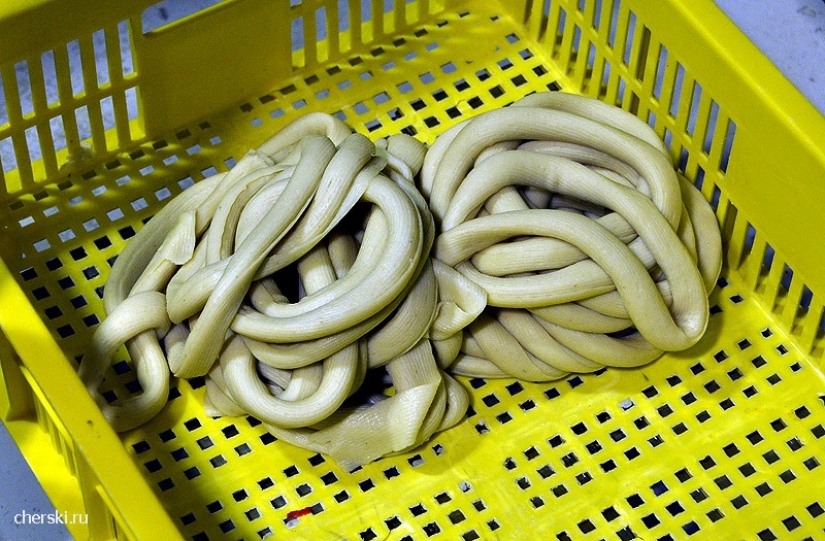
24. Further, future sticks attached to the necessary color
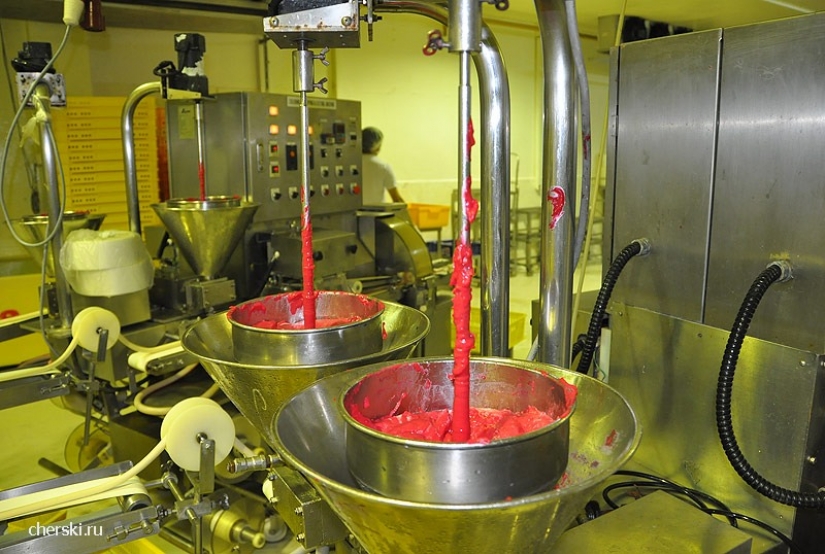
25. Then they are cut and wrapped
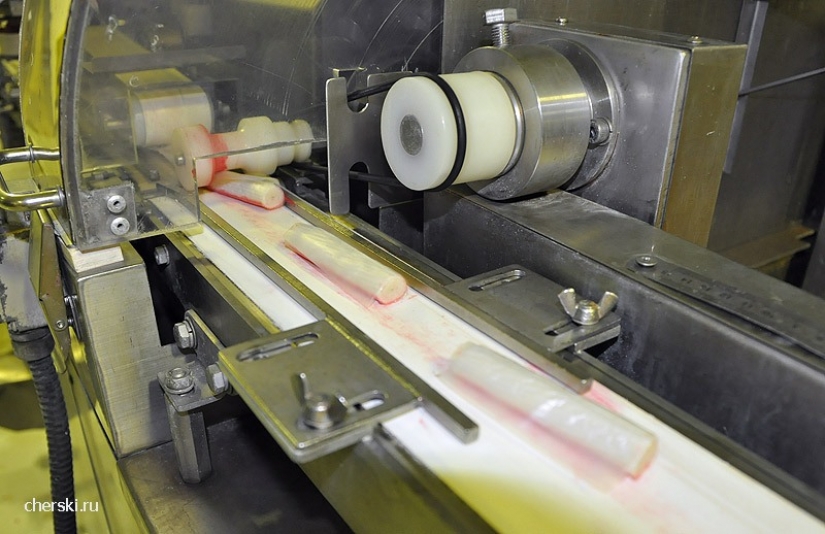
26. fall into boxes
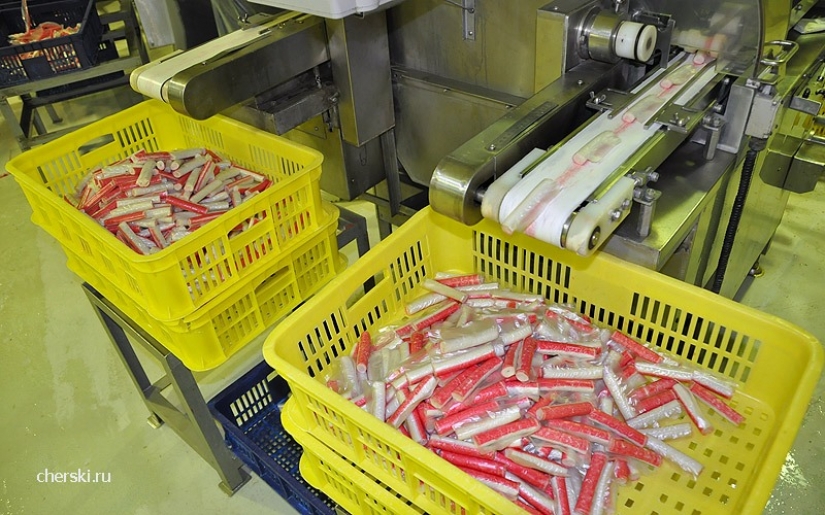
27. and then Packed
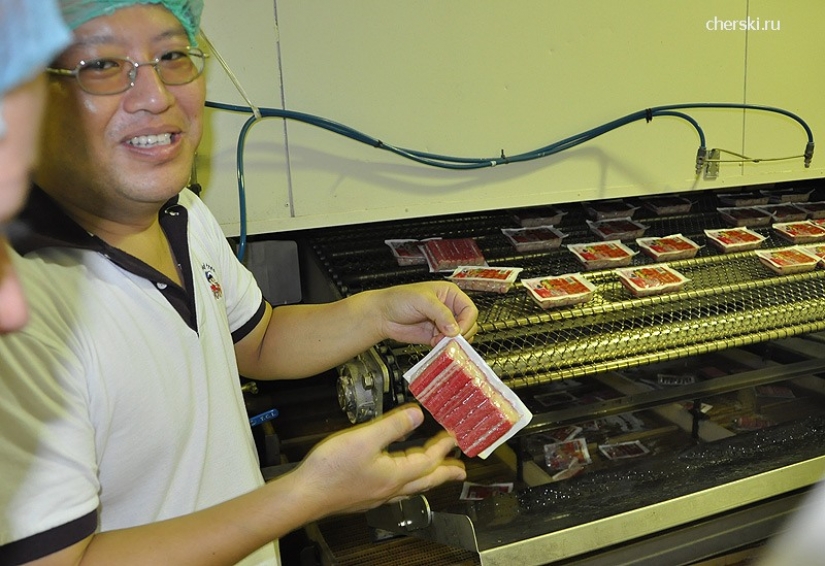
28. And in fact everything. You may ask why I have disappointed you in the origin of the crab sticks? Well, it's just that's the truth of life. These types of food make up a large proportion in our daily diet. And will be even more, because people also more and eating less. And of course, make the food that she does not like technology and future technology profits. To sell chips far better than the potatoes, but about the process of production is better not to know. To make delicacies from minced meat, too, probably cheaper than from a live fish. And the output of this factory turns out 25 tons per day available to the absolute majority of the population, even with a low income. The quality of these balls there is no doubt in Singapore with it very well strictly, and the product needs to pass a bunch of inspections and certifications before being allowed on the market, and even more so in other countries for export. We are probably too strict, but in Singapore there is no theft and corruption. We have. Therefore, in the production of the same feed may well be put mandatory spending on the roof, officials and other filth, and certainly something more swipes at the factory. What is added to products to make up for it all, just better not to know. This is probably why Singaporeans are not afraid to let us in on its not the most aesthetically pleasing production. There's even the most inquisitive journalist, no horror will not find.
Keywords: Food | Fish | Singapore | Factory
Recent articles

Amazing not just side by side — often it underfoot and even in the trash. You just need wide open eyes and attentively to ...

A few decades is quite a decent period for many things in our lives to have time to change. Fashion, styles, technologies, everyday ...
Related articles

Of course, it is better to feed pets with special food. But how they sometimes want to eat ice cream or French fries of their ...

China is one of the world's centers of forgery of everything and everything. For example, in the Middle Kingdom, expensive beef ...

The life of a modern person is like an eternal race: we are constantly in a hurry somewhere, we drink a lot of coffee, we are ...

American Ronda Rousey can be called a cult figure of the UFC without exaggeration. It was she who made women's MMA fights popular ...